Liriope, Big Blue Lilyturf, Monkey Grass
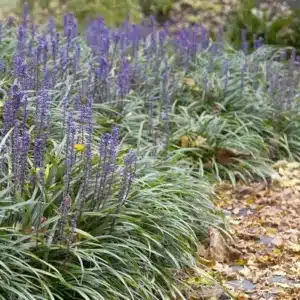
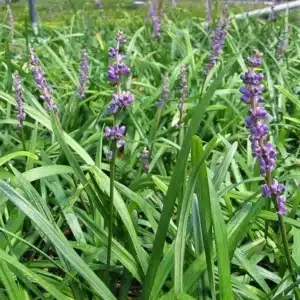
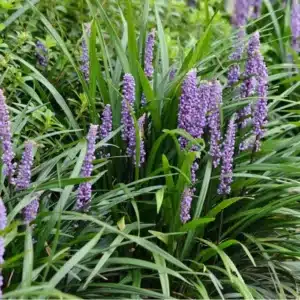
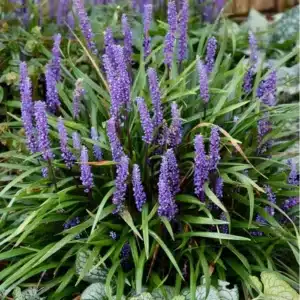
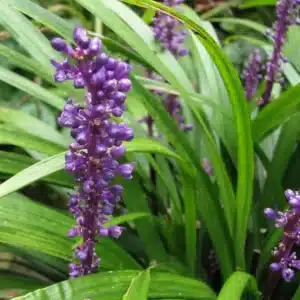
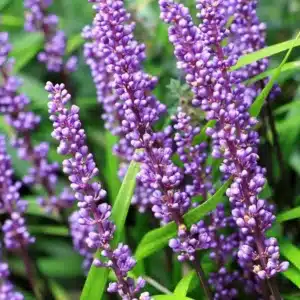
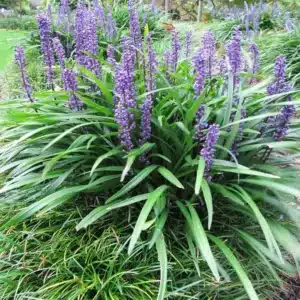
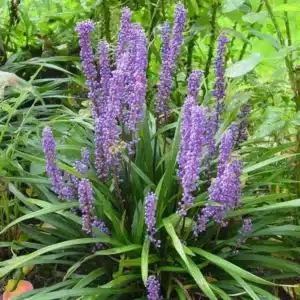
Although the plant is happiest in acidic soil, it will do well in any soil conditions and in part sun to shade. Propagation is easily accomplished by division. Simply use a shovel or knife to divide the plants and move the cut portion to a new location. Good in containers. The plant spreads by underground runners and little bublets, but can be kept to an area with a little attention.
Very little care is needed for these tough plants. Water weekly until established and then forget about them.
Slow-release fertilizer should be provided during the first two seasons. Supplemental fertilizer may be considered optional for established beds that have been prepared with added organic matter. Slow-release balanced 10-10-10 products may be applied to promote optimal growth.
Remove old foilage in spring before new leaves appear, or snip brown blades off as needed.
Usually a very durable plant, but can occasionally be taken down by crown rot, a strain of fungus Phytophthora. Evidence is yellowing of leaves and a flattening of the entire plant. If this fungus occurs, there is not much that can be done other than remove the plants and do not plant more liriope in that location because the fungus remains in the soil. The fungus is specific to these plants so if you must remove them, it is fine to place other plants in that area. Occasionally slugs will be present, but usually are not an issue to the life of the plants.

















